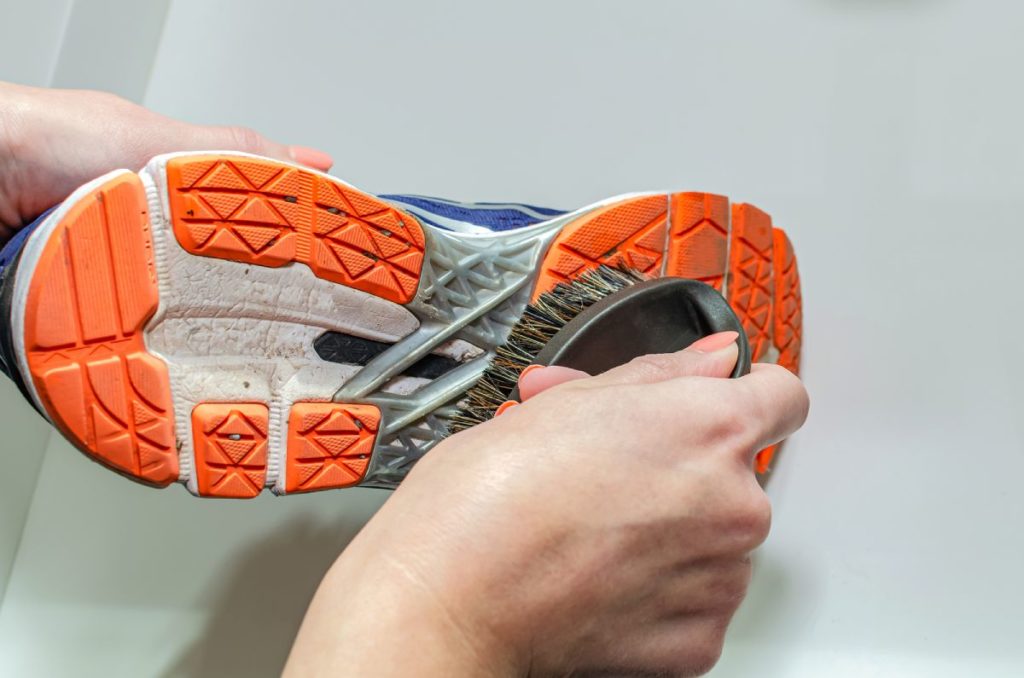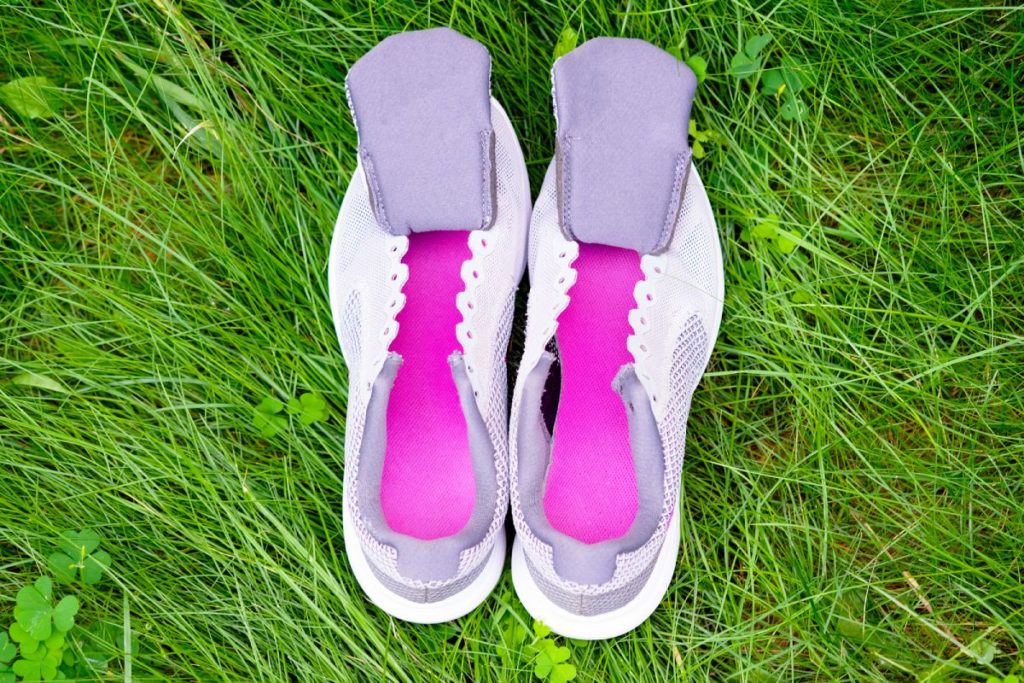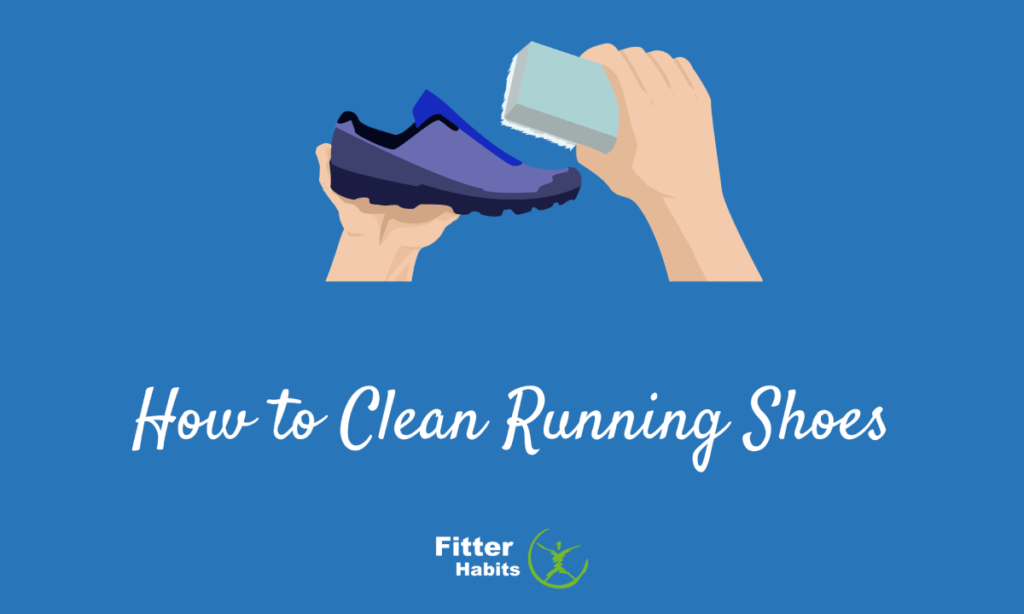These practical tips on how to clean running shoes will spruce up even your dingiest pair in no time!
Whether you don a simple pair of store-bought running shoes or have an expensive, custom-fit pair, the fact remains that a set of quality running shoes should easily last you for up to six months (even with lots of daily mileage) before needing to be replaced.
Unfortunately, the longevity of your running shoes can take a serious hit if you’re not diligent about maintaining them. This means taking time to properly clean them. Not only does dirt and debris caked on your running shoes look bad—but it could even affect your performance and cause premature wear and tear to your shoes.
Not sure where to begin when it comes to cleaning your running shoes? We’ve got some tips and tricks to clean your kicks!
Contents
How to Clean Running Shoes Inside and Out
First of all, it’s important to understand that there is really no “one-size-fits-all” process for cleaning a pair of running shoes. Ultimately, the best way to clean your running shoes is to follow the specific recommendations from your shoe manufacturer. After all, some materials may require special care and extra precautions to avoid damage.
Still, there are some general tips and steps you can keep in mind when it comes to cleaning your favorite pair of running shoes.
Step 1. Cleaning Outsoles

It’s generally best to work from the outside in when you’re cleaning your running shoes. Starting with your outsoles is a great way to remove dirt and grime that could affect your arch support and comfort while running. Meanwhile, taking the time to cleanse your outsoles can also prevent the spread of invasive plant species to other areas, which is actually a common problem among trail runners.
The best way to clean the outsoles of your shoes thoroughly is to use a brush with stiff bristles (an old toothbrush will work well here) and an abrasive cleaning paste. You can create your own cleaning paste by combining a small amount of baking soda and water until you achieve a paste-like consistency. Then, apply the paste to your outsoles and give them a good scrub with your brush, working in circular motions to loosen up as much debris as possible.
Next, you may also wish to rinse your outsoles off with a hose attachment; this can be a great way to remove smaller debris that may otherwise stay caked inside the small crevices of your outsoles.
You might also enjoy our explainer on compression running tights.
Step 2. Cleaning Uppers
Once you’re done cleaning the outsoles of your shoes, it’s time to move onto the uppers. Keep in mind that the material out of which uppers are made can vary greatly from one running shoe brand (and style) to the next—so you’ll really want to follow your manufacturer’s guidelines here to avoid inadvertently damaging your shoes.
In most cases, running shoe uppers are made of some kind of fabric, which can be washed and scrubbed by hand. Start by removing your shoelaces (and replacing them if they’re especially dirty). You’ll also want to remove any insoles or liners from the inside of your running shoes.
Next, use a scrubbing brush to loosen up any dirt or debris from the uppers themselves. From there, you can continue to clean them using a solution of mild dish soap and warm water. Most people find that it is most convenient to do this over a large sink, in a bathtub, or even outside using a garden hose and a large bucket or container.
Once you’ve scrubbed the uppers as clean as you can get them, rinse them thoroughly.
Step 3. Cleaning Insoles
The insoles of a running shoe can get especially dingy, so it’s important not to overlook cleaning them. Not only will cleaning your insoles cut down on odors, but doing so could even prevent the bacteria that causes athlete’s foot and other common runner’s ailments from growing.
Generally, the easiest way to clean a pair of running shoe insoles is to scrub and soak them in the same dish soap and water mixture that you created for the uppers. Once they’re cleaned, wring excess moisture out of them as much as possible and set them out to air dry.
Step 4. Drying

Speaking of drying, it’s important to always allow your running shoes to dry out completely on their own; do not place them in a clothes dryer, as this can cause warping and damage to the materials. The same applies to using any heat source to dry your shoes (such as a hairdryer).
To speed up the drying process, consider stuffing some newspapers inside each shoe. You can also keep your shoes in a well-ventilated room to encourage faster drying or set them outside to dry in the sun and fresh air (just make sure there’s no rain in the forecast!).
Once your shoes are dry, you can re-insert the insoles and lace them back up. If you use a spray or other product to keep your shoes protected from water, this may also be a good time for a fresh application.
The Final Word on How to Clean Running Shoes
Keeping your running shoes clean can help to prolong their life, keep you more comfortable, and make you look more stylish while you’re out and about. Be sure to keep these tips in mind the next time your running shoes are looking a little worse for wear.
FAQs About How to Clean Running Shoes
How do you wash running shoes in the washing machine?
Running shoes should never be cleaned in a washing machine. Not only can this damage your shoes, but this could cause damage to some washing machines as well.
How do you clean shoes with mesh?
Running shoes with mesh can generally be cleaned in the same manner as any other type of fabric running shoe. This includes scrubbing the mesh with a stiff-bristle brush and using a solution of warm water and gentle soap to remove debris and stains.



